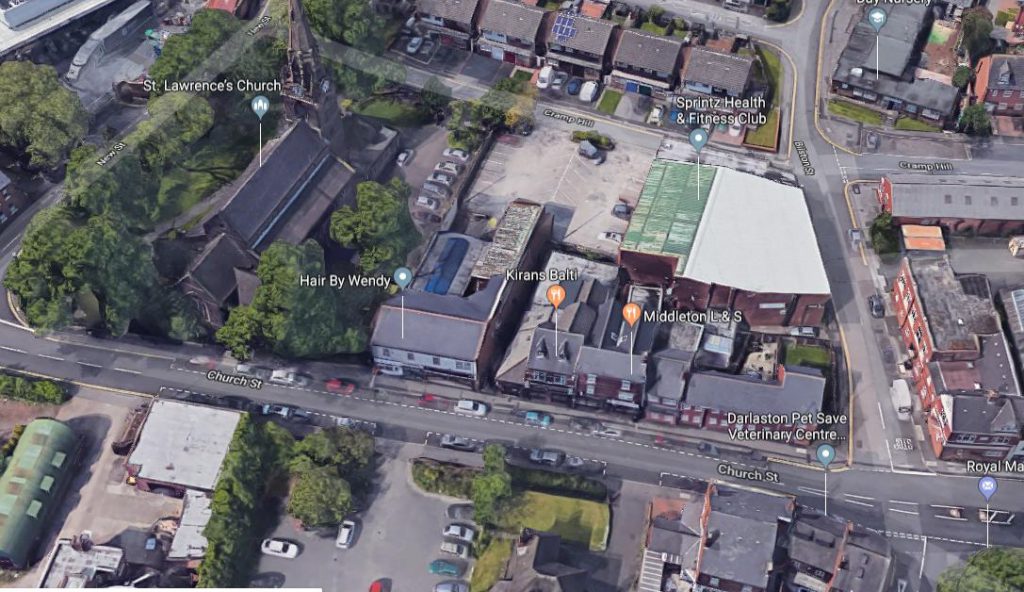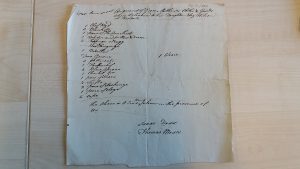Among the Darlaston Poor Law vouchers are detailed bills submitted by the surgeon Abel Rooker. Unlike those for parishes previously worked on, these give much more precise information on what Mr Rooker was supplying in terms of treatments and medicines. Surgeons from earlier parishes in the project generally were retained for a fixed half-yearly fee and then sought additional re-imbursement for lengthy involvements or unusual items. Mr Rooker does not appear to receive an agreed retainer until somewhat later (certainly by 1822).
When undertaking biographical research into individuals of interest who emerge from this project it is surprising where this leads. In the case of Abel Rooker this proved to involve 18th century developments in the non-conformist tradition that became Congregationalism and links between Walsall and Bridport in Dorset, an attempted murder in Lower Gornal and female chit-chat between Charlotte Bronte and her friend Ellen Nussey.
Abel Rooker was born in Walsall on 18 October 1787, the son of James and Mary Rooker and baptised in the independent chapel in Walsall on 20 Feb 1788. He developed his skills under the Walsall surgeon Francis Watkin Weaver, who paid apprentice tax for Abel on 26 January 1803, when Abel would have been 16 years old. Abel went on to marry Susanna Brevitt, the daughter of a Darlaston butcher, Thomas Brevitt and his wife Sarah, by licence at Darlaston St Lawrence church on 9 May 1811. Even if Abel had retained his parents’ non-conformist views the marriage would have had to take place in an Anglican church in this period before civil registration was introduced in 1837. Susanna was only 20 years old when they married.
Abel and Susanna had 4 children (James Yates Rooker, Harriet Mary Rooker, William Yates Rooker and Susanna Rooker) before they produced a son Abel who died as a baby (he was buried on 1 September 1818). Sadly Susanna had already passed away on 23 June that year. It is distressing to realise that at the time that Abel was ministering to the medical needs of the Darlaston poor, his skills could not save his own wife and son. It is interesting that Abel sought letters of administration on his wife’s estate on 5 Sep 1818. At this period, a wife’s property was considered to belong automatically at marriage to her husband.
Abel married again in 1821, by licence, on 22 May at Handsworth. His bride was Frances Fletcher, a glass maker’s daughter from Wednesbury, with whom he had 6 children (Maria, William, Ann Alice, Abel, John and Thomas Fletcher).
Frances died on 5 October 1853 and again Abel sought letters of administration in order to deal with his wife’s estate. He retired as surgeon on 1 Oct 1854 when his partnership with Thomas William was dissolved. Abel then moved to live in Lower Gornal and the 1861 census shows him living in Church Street with his unmarried daughter Ann Alice. He died in Lower Gornal on 18 April 1867 and two of his sons acted as executors of his will (probate granted at Lichfield on 13 June 1867).
Sources
Baptismal, marriage, death, apprenticeship, census and probate information accessed at Ancestry www.ancestry.co.uk/ and Find my Past www.findmypast.co.uk/
Wolverhampton Chronicle and Staffordshire Advertiser, 4 October 1854


